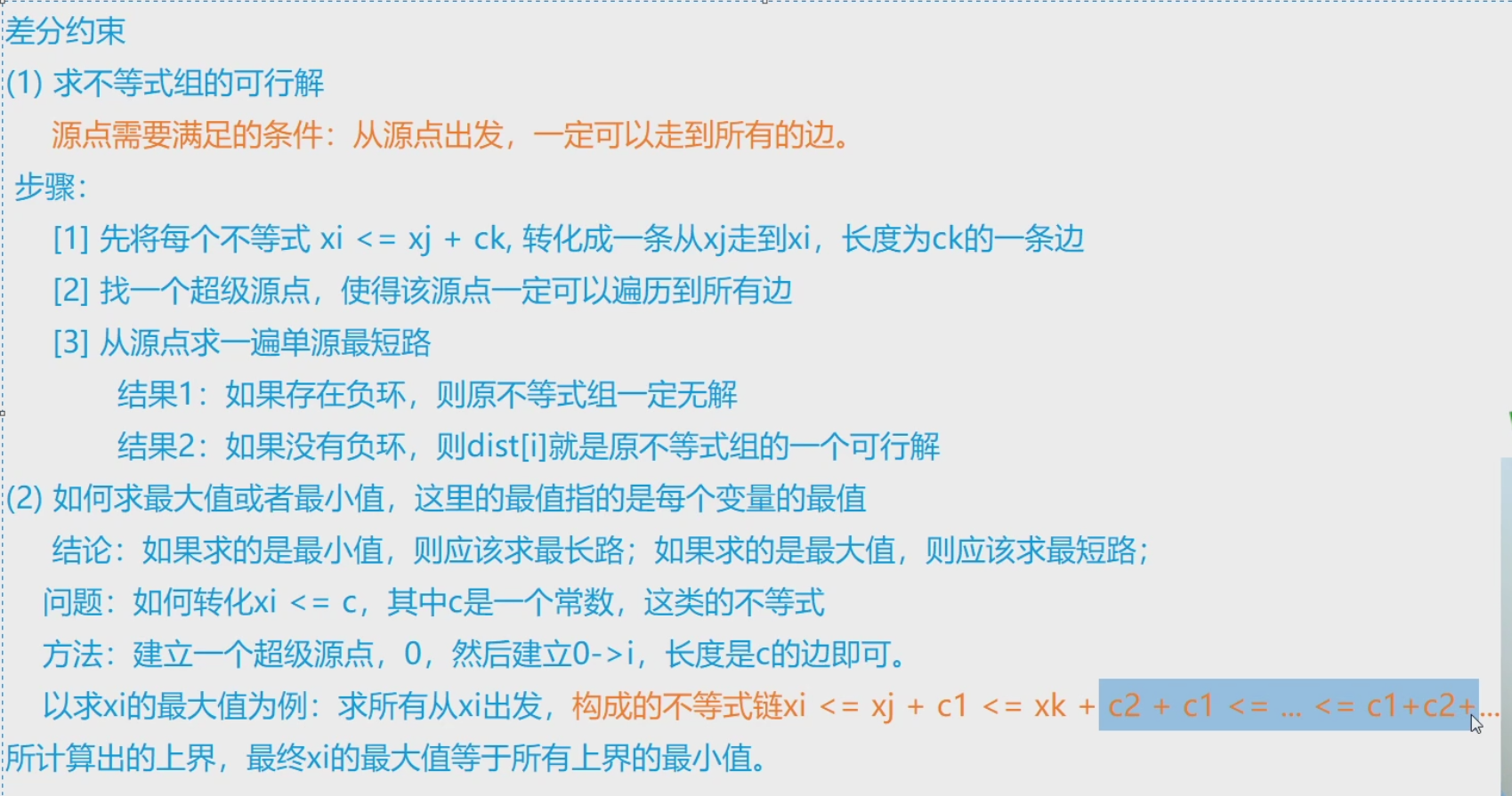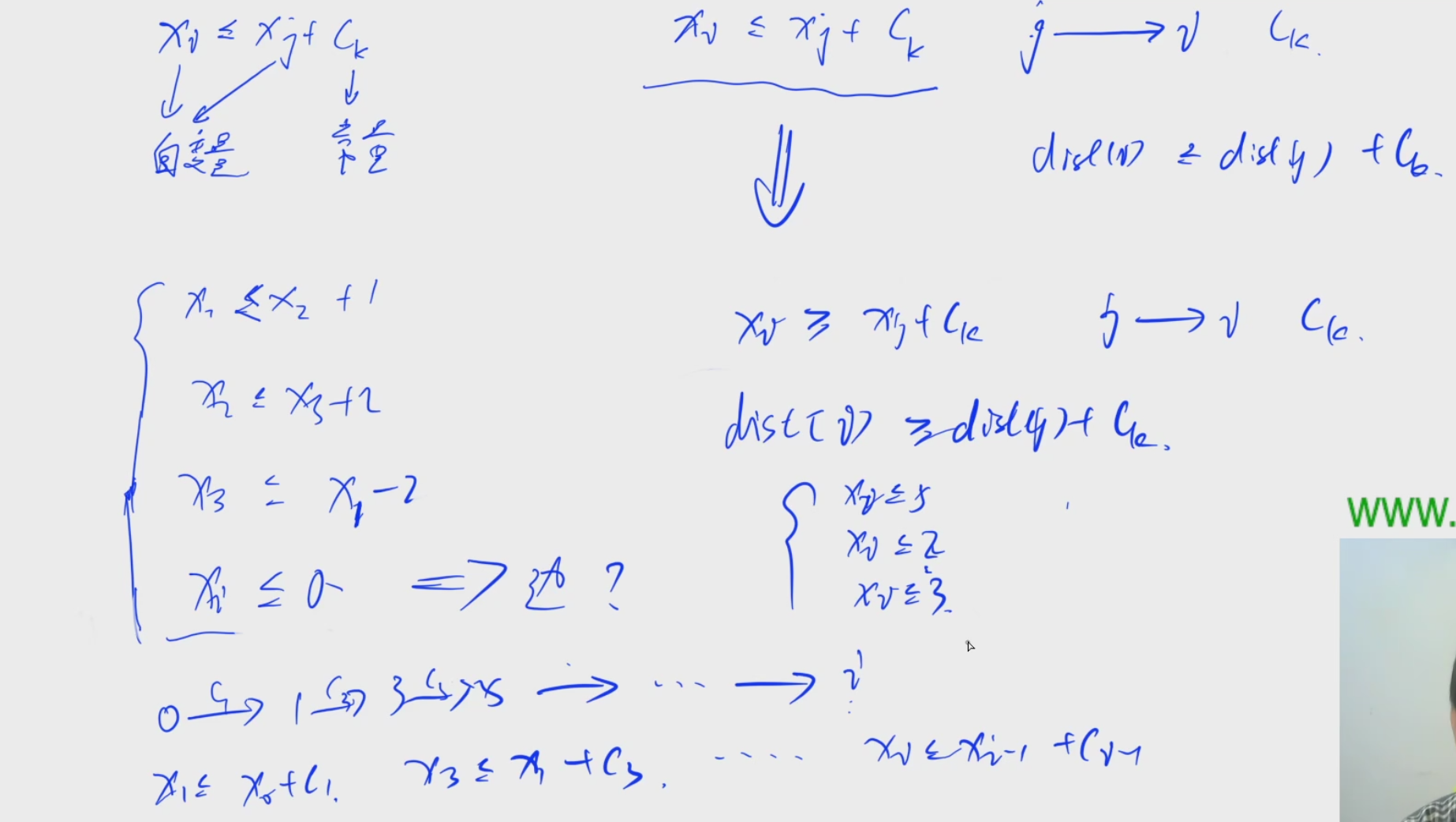1
2
3
4
5
6
7
8
9
10
11
12
13
14
15
16
17
18
19
20
21
22
23
24
25
26
27
28
29
30
31
32
33
34
35
36
37
38
39
40
41
42
43
44
45
46
47
48
49
50
51
52
53
54
55
56
57
58
59
60
61
62
63
64
65
66
67
68
69
70
71
72
73
74
75
76
77
78
79
80
81
82
83
84
85
86
87
88
89
90
91
92
93
94
95
96
97
| #include <iostream>
#include <algorithm>
#include <cstring>
using namespace std;
typedef long long LL;
const int N = 100010, M = 300010;
int n, m;
int h[N], e[M], w[M], ne[M], idx;
LL dist[N];
int q[N], cnt[N];
bool st[N];
void add(int a, int b, int c)
{
e[idx] = b, w[idx] = c, ne[idx] = h[a], h[a] = idx ++;
}
bool spfa()
{
memset(st, 0, sizeof st);
memset(cnt, 0, sizeof cnt);
memset(dist, -0x3f, sizeof dist);
dist[0] = 0;
int hh = 0, tt = 1;
q[0] = 0;
st[0] = true;
while(hh != tt)
{
int t = q[-- tt];
st[t] = false;
for (int i = h[t]; ~i; i = ne[i])
{
int j = e[i];
if(dist[j] < dist[t] + w[i])
{
dist[j] = dist[t] + w[i];
cnt[j] = cnt[t] + 1;
if(cnt[j] >= n + 1) return false;
if(!st[j])
{
st[j] = true;
q[tt ++ ] = j;
}
}
}
}
return true;
}
int main()
{
scanf("%d %d", &n, &m);
memset(h, -1, sizeof h);
while(m -- )
{
int op, a, b;
scanf("%d%d%d", &op, &a, &b);
if(op == 1) add(b, a, 0), add(a, b, 0);
else if(op == 2) add(a, b, 1);
else if(op == 3) add(b, a, 0);
else if(op == 4) add(b, a, 1);
else add(a, b, 0);
}
for (int i = 1; i <= n; i ++ )
add(0, i, 1);
if(!spfa()) printf("-1\n");
else
{
LL res = 0;
for (int i = 1; i <= n; i ++ )
res += dist[i];
printf("%lld\n", res);
}
return 0;
}
|







